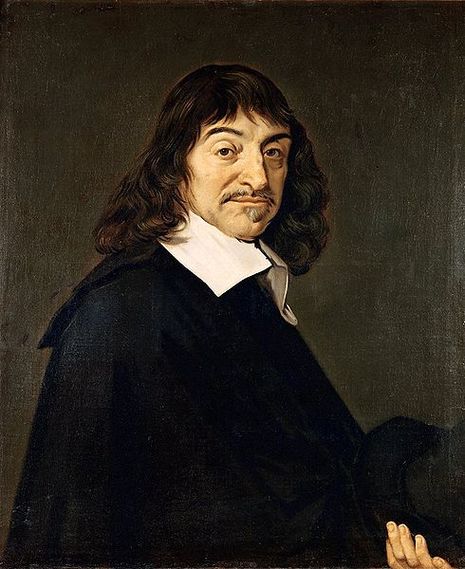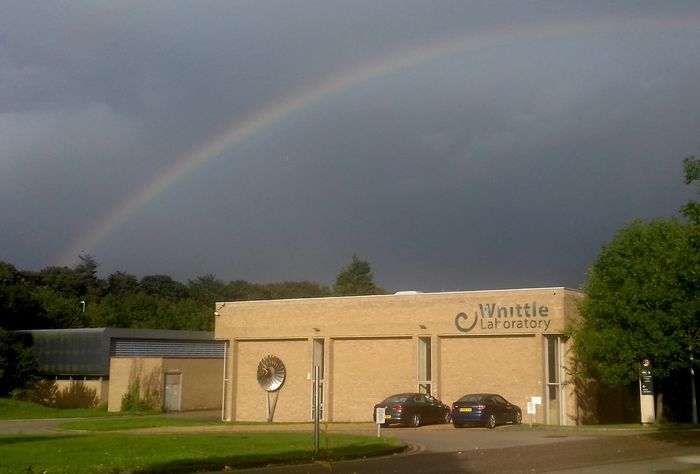The Bodily Oddities
Christian Swallow explores the incompatibility of different conceptions of the human body and how climate change may force us to face up to this.

As the human race comes to terms with our self-inflicted climate crisis, immense guilt and confusion have arisen. But how did we let this happen and how might this influence our conception of ourselves?
The climate crisis requires revolutionary changes towards how we situate our bodies in the world. The human body is both what we experience the world with and how we analogise it. To understand how we see our bodies is therefore to understand how we see the world.
We see our bodies through two incompatible viewpoints, through the natural sciences and through the social sciences. This unsurmountable divide was outlined by C.P Snow at Cambridge in 1959. He lamented the emergence of “Two Cultures”, the inability for the social sciences and natural sciences to reconcile their models of the world and the human body. It seems to me that this schism has crept through all of society, dividing conceptions of the planet, the body, and everything else into a dyad.
Firstly, there is the scientific body, the one you see in articles celebrating a newly understood component of our machinic selves. It is infinitely explanative, a body which can be examined for cause and effect, understood through medicine and science. This body can be put under a microscope, x-rayed, and deduced through methodologies.
Then, there is the cultural body. This is the body of identity, of memories and feelings. It lives in poetry and the social sciences. This is the body that can divorce itself from a supposedly determinative biology and create itself through culture and through experience.
At best, the cultural body exists as a sort of user interface where the scientific body is the hardware whirring in the background. This forms a membrane dividing the different models of the body and gives us comfort in our own skin. But, it merely reaffirms the Two Cultures, creating echo chambers for scientists and poets alike.
This is nothing new. In the Middle Ages, debates raged between Aristotelian conceptions of the body (as a balance of base elements - earth, air, fire and water), and the findings of the Empirics: people who worked with their hands and dissected bodies for knowledge. Yet a crucial difference between then and now is the ability to compare humans to other things. The medieval body was perceived as “a far more open and porous group of organs and systems”. Now, we see our bodies as distinct, understandable units, and our minds as more abstract entities that escape full explanation.
Following Descartes, bodily discussions became even more divided. Descartes “proved” that our consciousness could detach from the body and pass on to an afterlife, while our mundane, earthly limbs withered away. His infamous dictum “Ego ergo Sum” negated the messy, complicated body that we inhabit day to day. It allowed people to escape from the gritty reality into realms of “pure reason” and not get bogged down by intestines, arteries and limbs.
This divide persists to this day, and is regenerated with every new thinker. But the incompatibility of an aloof, immaterial mind and a reductionist body remains.
The dyadic depiction of the body not only fails to give an explanation of what we are as humans, but it also invites ignorance over our role in the world. Distracted by our own muddled selves we forget that these bodies are destroying the planet. Much like the porous medieval body, our bodies are in constant relation with the physical world. With every bite of food we consume, we become entangled in a vast system of agriculture and industry adding to burgeoning levels of pollution. Almost every action we make leaves a physical mark behind. We are completely and utterly embedded in the world.
Daisy Hildyard sketches a theory of this embeddedness in “The Second Body”. She argues that we have our body, the fleshy, intimate one I’m using to write this, but also a “second body”, which “is not as solid as the other one, but much larger. This second body is your own literal and physical biological existence - it is a version of you.” Our second body may be conceived as the sum of our actions in the world. This gives a category for our earthly impact. It allows us to see that we are attached to a million threads of causality. As I write this, my second body is growing as the pollution from the PowerPoint generating the electricity for my computer is pumped out into the world.
What “The Second Body” helps emphasize is the need to integrate our bodies into the wider world and to understand their role and place on the planet. I’m not saying we need to agree over a conception of the human body, but at the very least, it is important to get to some sort of acknowledgement of the impact that our existence has on others. The climate crisis necessitates an awareness of humanity’s complex mismanagement of natural resources and its resulting damage to the environment, rising sea levels and the planet’s habitability.
To avoid repeating those damages, we must emphasize the way we are porously imbedded into the world, not as sole actors of change but as part of a reciprocal relationship with Earth; it shapes us and we shape it.
 News / Cambridge academics stand out in King’s 2026 Honours List2 January 2026
News / Cambridge academics stand out in King’s 2026 Honours List2 January 2026 Interviews / You don’t need to peak at Cambridge, says Robin Harding31 December 2025
Interviews / You don’t need to peak at Cambridge, says Robin Harding31 December 2025 Comment / What happened to men at Cambridge?31 December 2025
Comment / What happened to men at Cambridge?31 December 2025 Features / “It’s a momentary expression of rage”: reforming democracy from Cambridge4 January 2026
Features / “It’s a momentary expression of rage”: reforming democracy from Cambridge4 January 2026 News / Varsity’s biggest stories of 202531 December 2025
News / Varsity’s biggest stories of 202531 December 2025










